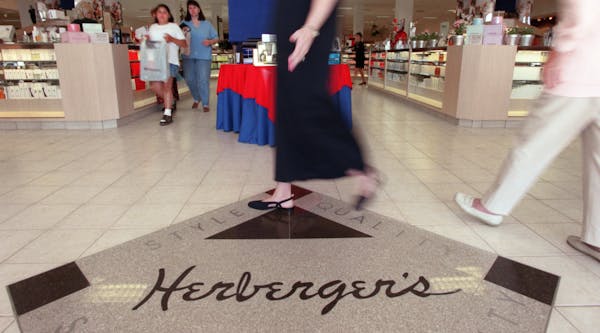A plan to dramatically change the character of Southtown Shopping Center in Bloomington has the center's owner claiming that Southtown is being "railroaded" by city officials.
The city is in the process of rezoning the Penn American District, an area that includes Southtown. City planners want to shift the area from a typical "acres of free parking" strip mall to a mixed-use urban development that includes housing, retail, offices and hotels. That plan is backed by the Metropolitan Council, which wants to run the proposed Orange Line bus rapid transit through Southtown.
On Thursday, the Bloomington Planning Commission will review a recommendation from the city staff to proceed with the rezoning. If adopted by the Planning Commission, the rezoning will go to the City Council next month for final approval.
Southtown's owner says the center is being forced into changes that could threaten its very existence.
"We feel like we're being railroaded," said Ken Vinje, director of properties and redevelopment for Kraus-Anderson Realty Co. "To get to what the city wants, you basically have to tear down Southtown and start over."
That's not true — at least in the near term, city officials said. The new, mixed-used zoning won't require Southtown to immediately change its existing layout, said Glen Markegard, Bloomington's planning manager.
But any development at Southtown in the future — either new building or major renovations — would have to follow the new zoning, which calls for more sidewalks, a more gridlike street pattern, taller buildings and more public space. In addition, future development would have to include uses other than retail.
Southtown was born of America's love affair with the automobile. Built in 1960 during the first wave of Twin Cities suburbanization, Southtown has been a comfortable, unpretentious shopping destination for generations of southwest metro residents.
Covering more than 40 acres, Southtown's design is simple: a gigantic, asphalt parking lot ringed with dozens of stores, adjacent to major roads and freeways. It's a formula that has kept the center 99 percent leased even during the worst recessions.
But suburbs like Bloomington, which once were on the fringes of the metro area, are now centrally located — and they want to develop a more urban character.
"This area has incredible potential," Markegard said. "The city wants to make sure the district reaches that potential." Government at all levels has made major public investments in roads, bridges, freeways and transit, Markegard said, and has an interest in making sure those investments are maximized.
"Today, Southtown is retail," Markegard said. "In the future, it could be retail plus residential plus hotels. We see that as adding to its success, rather than subtracting."
Vinje said the market isn't ready for the changes. People want what Southtown offers, he said: easy access and a good mix of everyday shops and restaurants. Southtown doesn't consider itself a direct competitor to nearby regional malls like Southdale and the Mall of America.
"Mall of America is a big beast," Vinje said. "We are a community center. That's how we've positioned ourself in the market. We've maintained 99 percent occupancy during the recession, so we're doing something right."
Steve Elkins, who represents the area on the Metropolitan Council, said Southtown is a critical link in the proposed Orange Line, which would arrive from the south and continue north through an underpass dug under Interstate 494. Transit-oriented design is the future, he said, and Southtown represents the kind of project that isn't a good fit for the broader needs of a complex metro region.
"What's not standing the test of time is the late-20th-century strip mall," Elkins said.
Michelle Vandervieren grew up in Richfield and has shopped at Southtown most of her life. Now a resident of south Minneapolis, she summed up the views of both sides.
"It's kind of an eyesore," she said. "But I shop here. It's easy. Good parking. And it's fast."
John Reinan • 612-673-7402

Former MnDOT official approved as Minneapolis public works director

Jury selected for Feeding Our Future trial after unusually long process due to publicity of massive fraud case

911 transcript gives more detail of Sen. Mitchell's alleged burglary
Man shot by deputy in Montrose allegedly said during earlier clash he'd rather die than be arrested

